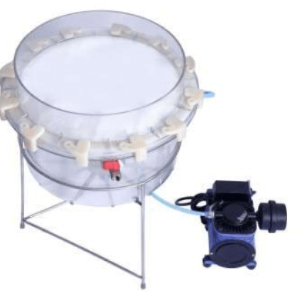In the medical billing process, coding errors related to neck pain ICD 10 codes are common, especially for specific conditions like cervicalgia. These errors can lead to claim denials, which can significantly impact reimbursement and the overall efficiency of a healthcare facility. For professionals in the medical field, understanding the specific ICD-10 codes for neck pain and how to avoid common denial mistakes is essential. Collaborating with a medical billing company can provide valuable support in this area, helping to ensure accurate coding and effective denial management. In this article, we will dive deep into the intricacies of neck pain ICD-10 denial codes, exploring their common errors and providing practical steps to avoid them.
Understanding Neck Pain ICD-10 Codes
Neck pain is categorized under ICD-10-CM code M54.2. This code falls under the broader classification of dorsopathies, specifically dorsalgia, which refers to conditions related to back and neck pain. Some of the most relevant ICD-10 codes related to neck pain include:
- M54.2 – Cervicalgia (Pain in the neck)
- M50.XX – Disorders of cervical discs
- M53.XX – Cervical spine disorders, not elsewhere classified
Each of these codes is used to document and bill for specific neck pain conditions. However, one of the main reasons for denial when using these codes is improper coding or a lack of specificity. To prevent denials, it’s important to accurately assign the correct code based on the patient’s diagnosis and symptoms.
Common Mistakes Leading to Neck Pain ICD-10 Denial
1. Lack of Specificity in Documentation
One of the most frequent reasons for denial of neck pain ICD-10 codes is the failure to include sufficient detail in the medical record. ICD-10 codes are highly specific, requiring detailed documentation to justify the code selection. For instance, M54.2 only applies to generic neck pain, but if the pain stems from a disc issue or another cervical condition, a more specific code, such as M50.XX, must be used.
2. Incorrect Code Combinations
Another common mistake occurs when providers incorrectly combine codes that should not be billed together. Some providers mistakenly pair a general neck pain code like M54.2 with codes for more specific conditions, leading to claim denials. According to ICD-10 coding guidelines, it’s essential to avoid such combinations by ensuring that each code accurately reflects a distinct diagnosis.
3. Use of Outdated or Incorrect ICD-10 Versions
Healthcare providers must consistently use the most current version of the ICD-10 code set. Each year, updates are made to reflect new medical discoveries, coding rules, and adjustments. Using an outdated code version can lead to claim denials. For example, if you are using a 2023 code version when a 2024 update exists, your claim could be flagged for denial due to non-compliance with current standards.
4. Failing to Include Necessary Modifiers
Certain neck pain claims may require modifiers to further clarify the diagnosis or treatment. For example, if a patient undergoes surgery for a cervical spine issue, a modifier may be necessary to differentiate the type of service performed. Neglecting to append the appropriate modifiers to the CPT codes can result in claim denials.
5. Misidentification of Payer Requirements
Different insurance companies and payers have their own guidelines regarding the submission of claims, and failure to comply with these specific requirements often leads to denial. One payer may require detailed documentation of the cause of neck pain (such as trauma or chronic condition), while others might request additional diagnostic test results. Understanding these variances is essential for preventing neck pain ICD-10 code denials.
Steps to Avoid Neck Pain ICD-10 Denial
1. Ensure Complete and Accurate Documentation
Accurate documentation is the foundation of successful coding. To avoid denial, providers should include detailed clinical notes, such as the onset, severity, and duration of neck pain, along with the specific anatomical location and any associated symptoms (like numbness or tingling). Additionally, if imaging tests (e.g., MRI or X-ray) were conducted, these results should be included in the patient’s record to support the diagnosis.
2. Use the Most Current ICD-10 Codes
Staying up-to-date with annual updates to the ICD-10 system is crucial. Subscribe to industry newsletters, attend coding workshops, or utilize coding software that automatically integrates the latest ICD-10 changes. Additionally, before submitting a claim, cross-reference the ICD-10 codes with the latest CMS (Centers for Medicare & Medicaid Services) coding guidelines to ensure they are current.
3. Implement Quality Control Checks
A robust quality control process is essential for reducing errors. Conduct periodic audits of medical records and claims submissions to catch errors before they result in denials. Having a team or system in place to review claims for accuracy in coding and documentation can significantly reduce denial rates.
4. Understand Payer-Specific Requirements
As each payer may have different rules, it’s important to stay informed of the specific requirements of your major payers. Create a list of these guidelines and ensure all coding and billing staff are aware of them. For instance, some insurance companies may deny claims for certain ICD-10 codes unless there is accompanying documentation proving the medical necessity of treatments. Be sure to cross-check every submission with the payer’s rules to avoid unnecessary denials.
5. Proper Training for Coding and Billing Staff
Ongoing education is vital for coding and billing teams. Regular training sessions on ICD-10 coding updates and payer-specific requirements will help staff stay current with industry changes. It’s also beneficial to provide training on denial management techniques, ensuring your team is equipped to handle denials efficiently and reduce future occurrences.
6. Correct Coding of Comorbidities and Symptoms
When neck pain is part of a more complex condition, it’s important to code all associated symptoms or comorbidities. For example, if the neck pain is accompanied by cervical radiculopathy (coded as M54.12), both conditions should be documented and coded. However, care should be taken to avoid coding symptoms that are an integral part of the primary diagnosis, as this can also lead to denials.
Appealing a Denied Neck Pain ICD-10 Claim
Despite best efforts, denials can still occur. Here are some steps to take when appealing a neck pain ICD-10 code denial:
- Review the Denial Reason: Obtain a detailed explanation from the payer and identify the specific reason for the denial.
- Correct Errors: If the denial was due to a coding error or insufficient documentation, correct the issue promptly. Submit additional documentation or adjust the ICD-10 code, if necessary.
- Resubmit the Claim: Once corrections have been made, promptly resubmit the claim with a clear explanation of the changes.
- Follow Up: Always follow up with the payer to ensure the claim is reprocessed and resolved.
Conclusion
Preventing neck pain ICD-10 denials requires diligence, accurate documentation, and a solid understanding of both ICD-10 coding rules and payer-specific requirements. By focusing on specificity in coding, keeping up with ICD-10 updates, and ensuring proper training for coding staff, healthcare providers can significantly reduce the occurrence of denied claims. Collaborating with a medical billing company can further enhance these efforts by providing expertise in navigating the complexities of coding and denial management. This not only improves revenue cycle management but also ensures that patients receive timely and appropriate care without the hassle of claim disputes.










